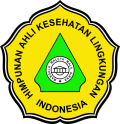FAKTOR RISIKO STUNTING PADA ANAK BALITA DI KABUPATEN LAMPUNG TENGAH
DOI:
https://doi.org/10.26630/rj.v15i2.2610Keywords:
Children, poverty, stunting, sanitation, case-controlAbstract
Stunting is stunted growth in children due to malnutrition. It can affect children's cognitive and physical development, increase the risk of infection, and significantly contribute to child morbidity and mortality. This study aims to analyze the risk factors for stunting in children under five (13-59 months). The study used a case-control design to compare previous exposure to stunting and normal children under five. Measurements and interviews were conducted with 120 children under five and their mothers. The SPSS (24.0) was used for the Chi-square and Odds Ratio (alpha = 5%) test. The study found the risk factors for stunting under five, poor income (OR = 4.75; 95% CI 2.18-10.33), not getting exclusive breastfeeding (OR = 5.29; 95% CI 2.39-11.68) ), there is no access to clean water (OR = 3.00; 95% CI 1.42–6.32), and healthy latrines (OR = 3.73; 95% CI 1.75-7.94). Increasing the nutritional status of pre-pregnant and pregnant women and access to clean water and healthy latrines to prevent infection is an urgent need to be implemented immediately.Â
References
Adair, L.S., Guilkey, D.K., 1997. Age-Specific Determinants of Stunting in Filipino Children. The Journal of Nutrition 127, 314–320.
Adedeji, I., John, C., Okolo, S., Ebonyi, A., Abdu, H., Bashir, M., 2017. Malnutrition and the Intelligence Quotient of Primary School Pupils in Jos, Nigeria. British Journal of Medicine and Medical Research 21, 1–13.
AL Rahmad, A.H., Miko, A., Hadi, A., 2013. Kajian Stunting Pada Anak Balita Ditinjau Dari Pemberian ASI Eksklusif , MP-ASI, Status Imunisasi Dan Karakteristik Keluarga Di Kota Banda Aceh. Jurnal Kesehatan Ilmiah Nasuwakes Poltekkes Aceh 6, 169–184.
Anwar, C., Abdullah, M., Sasmita, V., 2020. Stunting dan Faktor yang Berhubungan Studi Kasus Kontrol di Wilayah Kerja Puskesmas Baitussalam Kabupaten Aceh Besar 6, 988–998.
BAPENAS, 2019. Roadmap of SDGs Indonesia Towards 2030.
Barthâ€Jaeggi, T., Zandberg, L., Bahruddinov, M., Kiefer, S., Rahmarulloev, S., Wyss, K., 2020. Nutritional status of Tajik children and women: Transition towards a double burden of malnutrition. Maternal & Child Nutrition 16, 1–11.
Bomela, N.J., 2009. Social, economic, health and environmental determinants of child nutritional status in three Central Asian Republics. Public Health Nutrition 12, 1871–1877.
Cahyono, F., Manongga, S.P., Picauly, I., 2016. Faktor Penentu Stunting Anak Balita Pada Berbagai Zona Ekosistem Di Kabupaten Kupang. Jurnal Gizi dan Pangan 11, 9–18.
Checkley, W., 2003. Effects of Acute Diarrhea on Linear Growth in Peruvian Children. American Journal of Epidemiology 157, 166–175.
Dinas Kesehatan Provinsi Lampung, 2019. Profil Kesehatan Provinsi Lampung tahun 2018. Dinas Kesehatan Provinsi Lampung, Bandar Lampung.
Engle, P.L., Menon, P., Haddad, L., 1999. Care and Nutrition: Concept and Measurement, International Pood Policy Research Institute.
Galler, J.R., Bryce, C., Waber, D.P., Zichlin, M.L., Fitzmaurice, G.M., Eaglesfield, D., 2012. Socioeconomic Outcomes in Adults Malnourished in the First Year of Life: A 40-Year Study. PEDIATRICS 130, e1–e7.
Georgiadis, A., Penny, M.E., 2017. Child undernutrition: opportunities beyond the first 1000 days. The Lancet Public Health 2, e399.
He, P., Liu, L., Salas, J.M.I., Guo, C., Cheng, Y., Chen, G., Zheng, X., 2018. Prenatal malnutrition and adult cognitive impairment: a natural experiment from the 1959–1961 Chinese famine. British Journal of Nutrition 120, 198–203.
Hidayah, N., Rita, W., Anita, B., Podesta, F., Ardiansyah, S., Subeqi, A.T., Nasution, S.L., Riastuti, F., 2019. Hubungan pola asuh dengan kejadian stunting (rekomendasi pengendaliannya di Kabupaten Lebong). Riset Informasi Kesehatan 8, 140.
Hoddinott, J., Alderman, H., Behrman, J.R., Haddad, L., Horton, S., 2013. The economic rationale for investing in stunting reduction. Maternal & Child Nutrition 9, 69–82.
Imelda, I., Rahman, N., Nur, R., 2020. Faktor Risiko Kejadian Stunting Pada Anak Umur 2-5 Tahun Di Puskesmas Biromaru. Ghidza: Jurnal Gizi dan Kesehatan 2, 39–43.
Indah Nurdin, S.S., Octaviani Katili, D.N., Ahmad, Z.F., 2019. Faktor ibu, pola asuh anak, dan MPASI terhadap kejadian stunting di kabupaten Gorontalo. Jurnal Riset Kebidanan Indonesia 3, 74–81.
Islam, M.S., Zafar Ullah, A.N., Mainali, S., Imam, M.A., Hasan, M.I., 2020. Determinants of stunting during the first 1,000 days of life in Bangladesh: A review. Food Science & Nutrition 8, 4685–4695.
Kang, Y., Aguayo, V.M., Campbell, R.K., Dzed, L., Joshi, V., Waid, J.L., Gupta, S.D., Haselow, N.J., West, K.P., 2018. Nutritional status and risk factors for stunting in preschool children in Bhutan. Maternal & Child Nutrition 14, 1–16.
Karpati, J., Neubourg, C., Laillou, A., Poirot, E., 2020. Improving children’s nutritional status in Cambodia: Multidimensional poverty and early integrated interventions. Maternal & Child Nutrition 16.
Kemenkes RI, 2016. Situasi Balita Pendek Di Indonesia. Kementerian Kesehatan Republik Indonesia ISSN 2442-, 1–10.
Khan, S., Zaheer, S., Safdar, N.F., 2019. Determinants of stunting, underweight and wasting among children < 5 years of age: evidence from 2012-2013 Pakistan demographic and health survey. BMC Public Health 19, 358.
Kinshella, M.L.W., Moore, S.E., Elango, R., 2020. The missing focus on women’s health in the First 1,000 Days approach to nutrition. Public Health Nutrition.
Kusumawati, E., Rahardjo, S., Sari, H.P., 2015. Model for controlling risk factors for stunting in children under three years. National Public Health Journal 9, 249.
MCA-Indonesia, 2013. Stunting dan Masa depan Indonesia. Jakarta.
Ministry of Health Indonesia, 2010. Decree of the Minister of Health of the Republic of Indonesia Number 1995 / Menkes / SK / XII / 2010 concerning Anthropometric Standards for Assessing the Nutritional Status of Children, Ministry of Health Indonesia. Indonesia.
Ministry of Health Indonesia, 2018. The Situation of Stunting in Indonesia. Health Data and Information Bulletin 1, 6–18.
Nadiyah, Briawan, D., Martianto, D., 2014. Faktor Risiko Stunting Pada Anak Usia 0—23 Bulan Di Provinsi Bali, Jawa Barat, Dan Nusa Tenggara Timur. Jurnal Gizi dan Pangan 9, 125–132.
National Development Planning Agency, 2011. National Action Plan for Food and Nutrition 2011-2015.
Niga, D.M., Purnomo, W., 2016. Hubungan Antara Praktik Pemberian Makan, Perawatan Kesehatan, Dan Kebersihan Anak Dengan Kejadian Stunting Pada Anak Usia 1-2 Tahun Di Wilayah Kerja Puskesmas Oebobo Kota Kupang. Wijaya 3, 151–155.
Nugroho, A., 2016. Determinan Growth Failure (Stunting) pada Anak Umur 1 S/D 3 Tahun (Studi di Kecamatan Tanjungkarang Barat Kota Bandar Lampung). Jurnal Kesehatan 7, 470.
Par’i, H.M., Wiyono, S., Harjatmo, T.P., 2017. Penilaian Status Gizi, Kementerian Kesehatan Republik Indonesia. Jakarta.
Pelletier, D.L., Frongillo, E.A., 2003. Changes in Child Survival Are Strongly Associated with Changes in Malnutrition in Developing Countries. The Journal of Nutrition 133, 107–119.
Pickering, A.J., Ercumen, A., Arnold, B.F., Kwong, L.H., Parvez, S.M., Alam, M., Sen, D., Islam, S., Kullmann, C., Chase, C., Ahmed, R., Unicomb, L., Colford, J.M., Luby, S.P., 2018. Fecal Indicator Bacteria along Multiple Environmental Transmission Pathways (Water, Hands, Food, Soil, Flies) and Subsequent Child Diarrhea in Rural Bangladesh. Environmental Science & Technology 52, 7928–7936.
Rahman, F.D., 2018a. Pengaruh Pola Pemberian Makanan Terhadap Kejadian Stunting Pada Balita (Studi di Wilayah Kerja Puskesmas Sumberjambe, Kasiyan, dan Puskesmas Sumberbaru Kabupaten Jember). The Indonesian Journal of Health Science 10, 15–24.
Rahman, F.D., 2018b. The Effect of Feeding Patterns on the Incidence of Stunting in Toddlers. The Indonesian Journal of Health Science 10, 15–24.
Siringoringo, E.T., Syauqy, A., Panunggal, B., Purwanti, R., Widyastuti, N., 2020. Karakteristik Keluarga Dan Tingkat Kecukupan Asupan Zat Gizi Sebagai Faktor Risiko Kejadian Stunting Pada Baduta. Journal of Nutrition College 9, 54–62.
Umboh, E., Wilar, R., Mantik, M.F.J., 2013. Pengetahuan Ibu Mengenai Manfaat Asi Pada Bayi. Jurnal e-Biomedik 1.
UNICEF Indonesia, 2018. Laporan Tahunan 2018 [WWW Document]. UNICEF Indonesia. URL https://www.unicef.org/indonesia/id/laporan/unicef-indonesia-laporan-tahunan-2018 (accessed 4.15.21).
Victora, C.G., Adair, L., Fall, C., Hallal, P.C., Martorell, R., Richter, L., Sachdev, H.S., 2008. Maternal and child undernutrition: consequences for adult health and human capital. The Lancet 371, 340–357.
WHO, 2014. Stunting Policy Brief [WWW Document]. URL https://www.who.int/nutrition/topics/globaltargets_stunting_policybrief.pdf
WHO, 2017. Guideline: Updates on the management of severe acute malnutrition, WHO.
WHO, 2020. Stunting global and regional trends jme-(unicef-who-wb). WHO.
Widyaningsih, N.N., Kusnandar, K., Anantanyu, S., 2018. Keragaman pangan, pola asuh makan dan kejadian stunting pada balita usia 24-59 bulan. Jurnal Gizi Indonesia (The Indonesian Journal of Nutrition) 7, 22–29.
Yudianti, Y., Saeni, R.H., 2017. Pola Asuh Dengan Kejadian Stunting Pada Balita di Kabupaten Polewali Mandar. Jurnal Kesehatan Manarang 2, 21.
Downloads
Published
How to Cite
Issue
Section
License
Copyright (c) 2021 Ruwa Jurai: Jurnal Kesehatan Lingkungan

This work is licensed under a Creative Commons Attribution-NonCommercial 4.0 International License.

Ruwa Jurai: Jurnal Kesehatan Lingkungan is licensed under a Creative Commons Attribution-NonCommercial 4.0 International License.
Authors who publish with this journal agree to the following terms:
- Authors retain copyright and grant the journal right of first publication with the work simultaneously licensed under a Creative Commons Attribution-Non Commercial License that allows others to share the work with an acknowledgment of the work's authorship and initial publication in this journal.
- Authors are able to enter into separate, additional contractual arrangements for the non-exclusive distribution of the journal's published version of the work (e.g., post it to an institutional repository or publish it in a book), with an acknowledgment of its initial publication in this journal.
- Authors are permitted and encouraged to post their work online (e.g., in institutional repositories or on their website) prior to and during the submission process, as it can lead to productive exchanges, as well as earlier and greater citation of published work.









